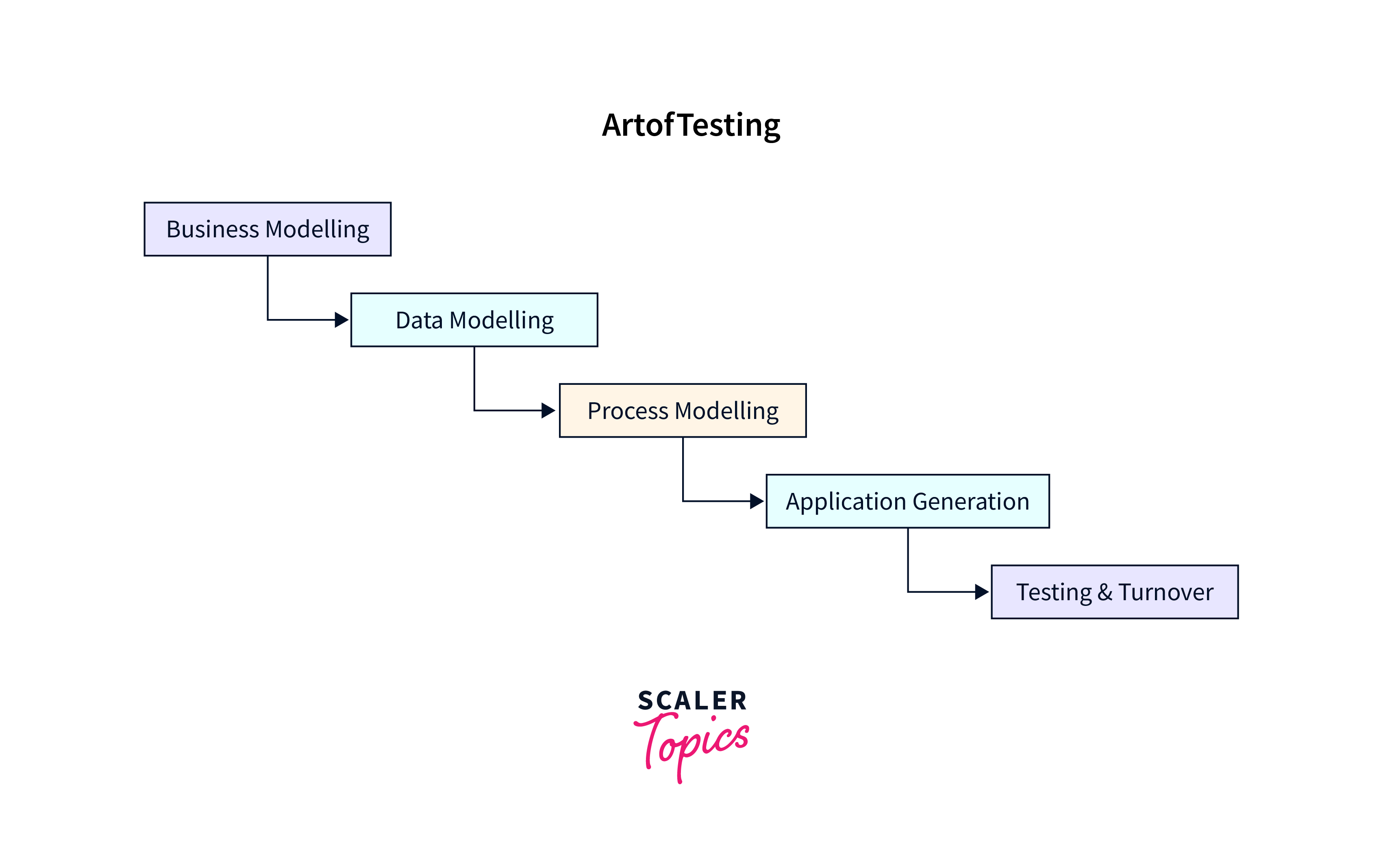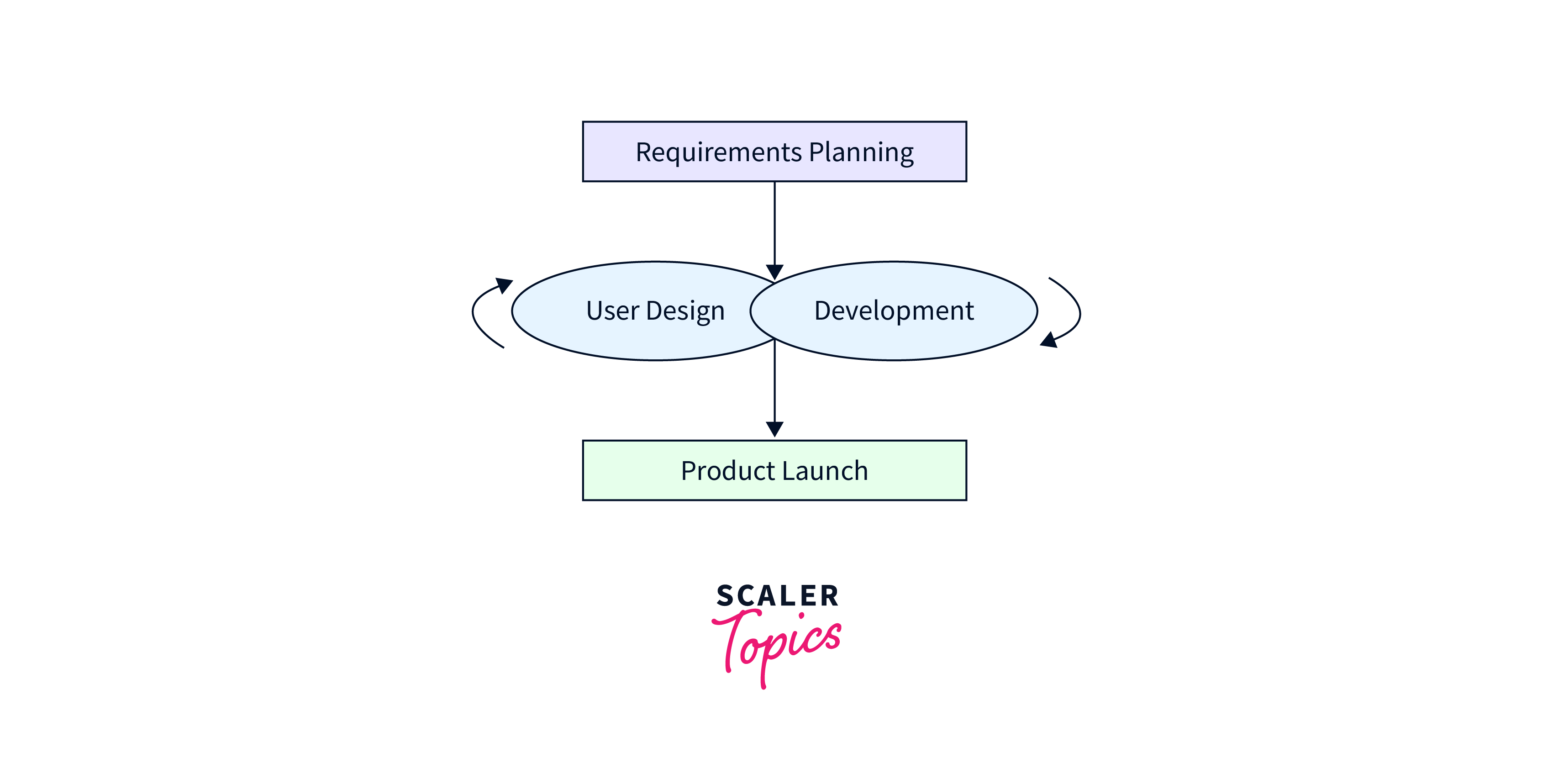Rapid Application Development Model | RAD Model
Overview
Rapid Application Development (RAD) is a software development method that prioritizes iterative prototyping and user collaboration. It uses short cycles to create working prototypes and refine them based on iterative feedback. RAD's flexibility adapts to changing requirements, encourages early user engagement, and reduces targeting errors. While RAD is effective for rapid delivery, it can be difficult for larger projects or due to limited user availability.
What is the RAD Model in Software Engineering?
The RAD model is a software development methodology emphasizing rapid iterations and user involvement. It aims to provide quality software solutions in a fast-paced environment. It is a response to the traditional waterfall model, offering a more flexible and adaptive approach to software engineering. In the RAD model, development cycles are short and iterative, enabling rapid delivery of working software. This article provides an overview of the RAD model, its main principles, steps, benefits, limitations, comparisons with other development models, implementation best practices, and real-world examples of successful RAD model projects.
Phases of RAD Model in Software Engineering
Rapid Application Development (RAD) typically includes the following steps.
-
Requirements Planning:
Determine project scope, goals, and user needs. Set clear goals and create an overall vision for the software.
-
User Design:
Work closely with users to gather and analyze requirements. Develop prototypes to visualize and improve software interface and functionality.
-
Build:
Create and refine prototypes quickly through iterative development cycles. Focus on creating functional components that satisfy specific user needs.
-
Slicing:
Integrate and test developed components to ensure they work together seamlessly. Be prepared to transition from development to production.
-
Feedback from users:
Collect feedback from users and stakeholders on the functionality and design of the prototype. Make the necessary adjustments and corrections.
-
Refinement:
Incorporate user feedback into prototypes, finalize the design, and ensure all components are well integrated.
-
Testing and Quality Assurance:
Carefully test the functionality, performance, and reliability of the software. Identify and correct any problems or deficiencies.
-
Deployment:
Deploy the final product for user access, often in stages, ensuring a smooth transition from development to production.
-
Maintenance and Support:
Provide ongoing maintenance, updates, and user support to resolve issues, optimize performance, and meet changing needs.

Throughout these stages, RAD emphasizes rapid iterations, user involvement, and continuous feedback to create a software solution that precisely meets user expectations and requirements.
When to Use the RAD Model?
The RAD model in software engineering is a software development method that favors rapid prototyping and iterative development. It is best suited for projects where requirements are not well defined or changing, and where rapid development and regular feedback are important. RAD is particularly useful when:
-
Time critical projects:
When the project must be implemented quickly to meet the deadlines, for example, a company may need a simple e-commerce website within a few weeks to take advantage of marketing opportunities.
-
Dynamic requirements:
When the client's requirements constantly evolve or are not fully understood at the beginning of the project. RAD enables flexible adaptation to changing needs during the development process.
-
User-Centered Apps:
When you focus on creating user-friendly and intuitive apps. RAD facilitates early user engagement and feedback, resulting in a better user experience.
-
Prototyping:
Rapid prototyping is required to demonstrate key features and concepts to stakeholders or potential users. This is common in industries such as product design or mobile app development.
-
Small and Medium Projects:
RAD is suitable for small projects where the premiums of a more traditional and structured approach may not be necessary.

Examples of scenarios where the RAD model in software engineering could be used:
-
Mobile App Development:
Consider a startup developing a new social networking app. Because of rapidly changing user expectations and the need for a compelling user interface, RAD can be used to quickly prototype key application features and gather user feedback before finalizing the design.
-
E-Commerce Platform:
A retail company decides to open an online store with unique features. RAD can be used to develop an initial version of the platform that allows customers to browse and shop. The platform could then be continuously improved based on user interaction and feedback.
-
Event Management System:
Imagine an event management company that wants to create a system to manage event registration, ticket sales, and attendees. RAD can be used to rapidly prototype basic features and iteratively add features as the system evolves.
-
Health care information system:
In the field of health care, a hospital may need to develop a patient information management system. RAD helps quickly create a prototype that includes essential features, allowing nursing staff to interact with the system and provide feedback.
-
Online Learning Platform:
The university wants to start an online learning platform. With RAD, the development team can quickly build and improve the platform based on the needs of teachers and students, and add new features as the platform gains traction.
It is important to note that while the RAD model in software engineering can offer several advantages, such as faster development and user results, it may not be suitable for all projects, especially projects with strict security requirements, large enterprise systems, or projects with a fixed plan. essential from the start. Careful consideration of project characteristics and requirements is critical in deciding whether to use the RAD model.
Advantages of RAD Model
The RAD model offers several advantages that make it a valuable approach for certain types of projects. Here are the benefits of the RAD model:
-
Rapid prototyping and development:
RAD emphasizes the creation of prototypes that demonstrate the essential features of the final product. In this way, stakeholders and users can visualize the final result already at an early stage of the development process. Rapid iterations and improvements help quickly arrive at a satisfactory solution.
-
Regular user feedback:
RAD encourages continuous user participation and feedback. Users can interact with the prototype, provide insights, and suggest improvements. This feedback loop helps align the product with user expectations, resulting in a more user-friendly and efficient solution.
-
Reduced development time:
Focusing on rapid development and prototyping results in a shorter development cycle. This can be useful when you need to deliver work product on a tight schedule, allowing for faster market time.
-
Cost-effectiveness:
By identifying and addressing potential problems early in the development process, RAD helps minimize costly rework and subsequent changes. An iterative approach allows for course corrections that are less expensive than making changes at later stages of development.
-
Rapid concept validation:
RAD enables rapid validation of a project's concept using working prototypes. This helps stakeholders assess the feasibility and profitability of a project before committing to extensive resources.
-
Easier maintenance and updates:
Because RAD projects are built in smaller, manageable batches, maintenance, and updates can be done more smoothly. Changes can be made to certain components without disrupting the entire system.
Disadvantages of the RAD Model
While the RAD model has several advantages, certain disadvantages must be considered.
- RAD is highly dependent on continuous user participation and feedback. If users are not available or engaged, the effectiveness of the model may be compromised.
- RAD's focus on rapid iterations may not be suitable for very large and complex projects where managing parallel development activities is difficult.
- Repeated iterations and changing requirements can lead to scope where the scope of the project expands beyond the original boundaries, affecting schedules and budgets.
- Continuous user involvement, iterative cycles, and concurrent development can require more resources, including staff, time, and effort.
- Rapid prototyping can make it difficult to accurately estimate project timelines and costs at the outset.
- RAD's focus on short-term iterations can lead to a lack of attention to long-term project planning and architecture.
In summary, the advantages of rapid development, user involvement, and flexibility of the RAD model in software engineering model must be weighed against potential disadvantages that include challenges related to project scope, resources, documentation, and targeting. Project characteristics and organizational readiness for a RAD approach must be carefully considered before implementing this methodology.
Conclusion
In summary, the RAD model offers rapid prototyping, iterative development, and continuous user involvement, resulting in:
- Rapid iterations enable rapid product delivery and response to changing demands.
- Regular user feedback ensures compliance with user needs and increases user satisfaction.
- Adapts to changing requirements and minimizes project risks through continuous improvement.
- Creates multidisciplinary teamwork, effective communication, and stakeholder participation.
- Early detection and validation of errors improves product accuracy and reduces rework.
- Encourages experimentation, innovation, and exploration of design possibilities.
While the applicability of RAD is useful, it depends on the dynamics of the project, so it is critical to align the approach with the goals and constraints of the project.
